
18 March 2024
Trip to an aquarium and theme park! A Mito and Oarai Trip to experience history and culture in the areas associated with the Mito Tokugawa family
The Ibaraki Trip started in the Oarai and Hitachinaka areas, where you can enjoy gentle sea breezes. The driving route was dotted with seaside recreation spots and seafood gourmet specialties available only during limited seasons.The following day, the tour visited places in Mito City associated with the Mito Tokugawa family, allowing time to contemplate the days of the Tokugawa daimyo Mitsukuni and Nariaki.Meeting people in different places is one of the best parts of traveling! You are certain to treasure your experiences of meeting the local people, who are single-minded but at the same time warm and playful.
Mentai Park Oarai
Visit, see, and enjoy! A wonderland full of mentaiko!

This theme park specializes in mentaiko (salted cod roe spiced with chili peppers) and is operated by Kanefuku, a long-established mentaiko maker based in Fukuoka. The factory, which offers free tours, is truly packed with mentaiko experiences. There is also a mentaiko direct sales depot and food court. At the entrance, you are welcomed by monuments of the themed characters "Tarapiyo" and "Dr. Tarakon".

On a good day, the Oarai factory produces more than five tons of mentaiko. The tour gallery provides an overview of mentaiko, using materials and videos. The mentaiko production process can be viewed through glass from the tour corridor.
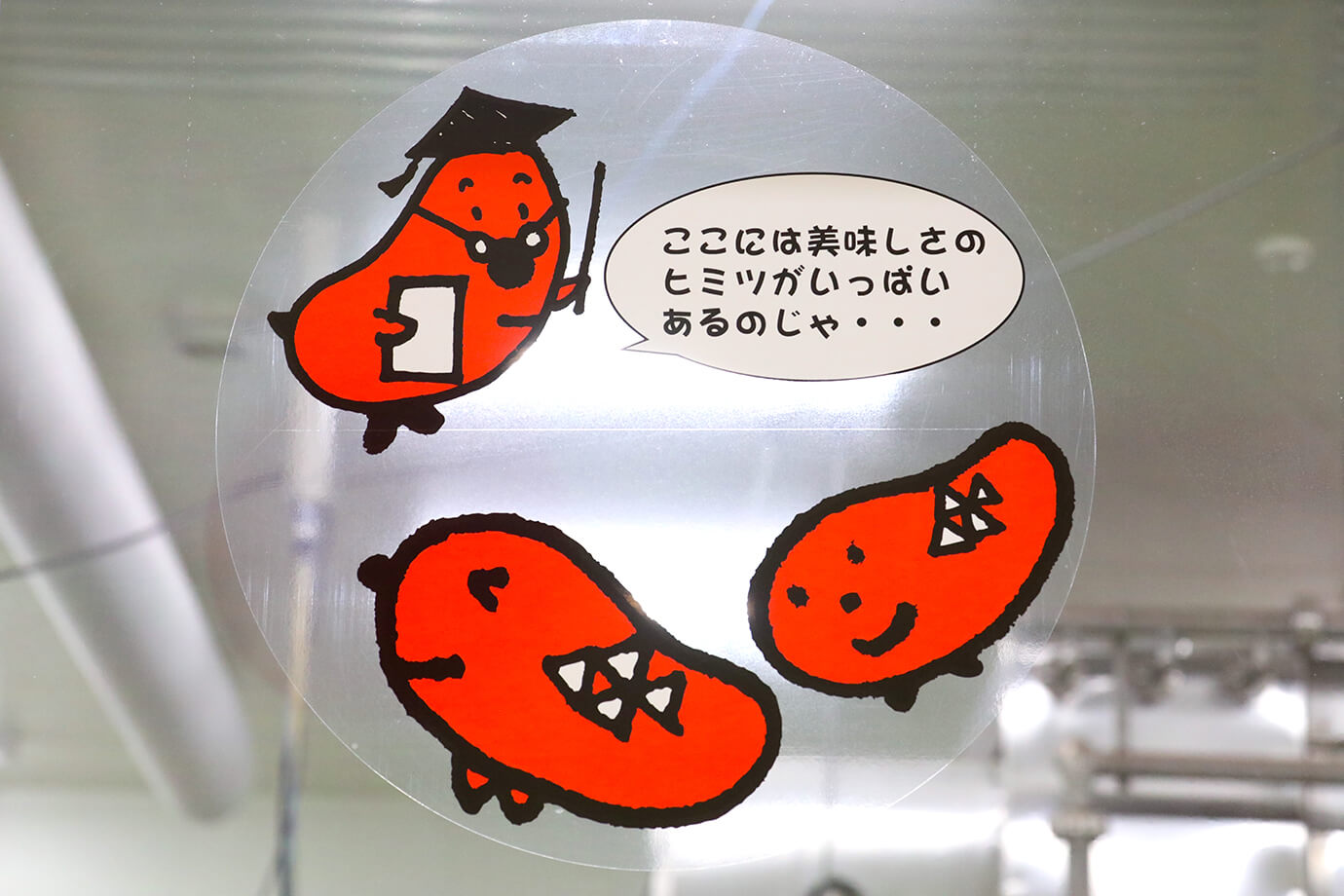
During the tour, Tarapiyo and Dr. Tarakon will teach you the key facts.

After the tour, why not stop by the photo booth? Being packed like this makes me feel like spicy mentaiko!
The children's playground has been built to give children somewhere to play even on rainy days.
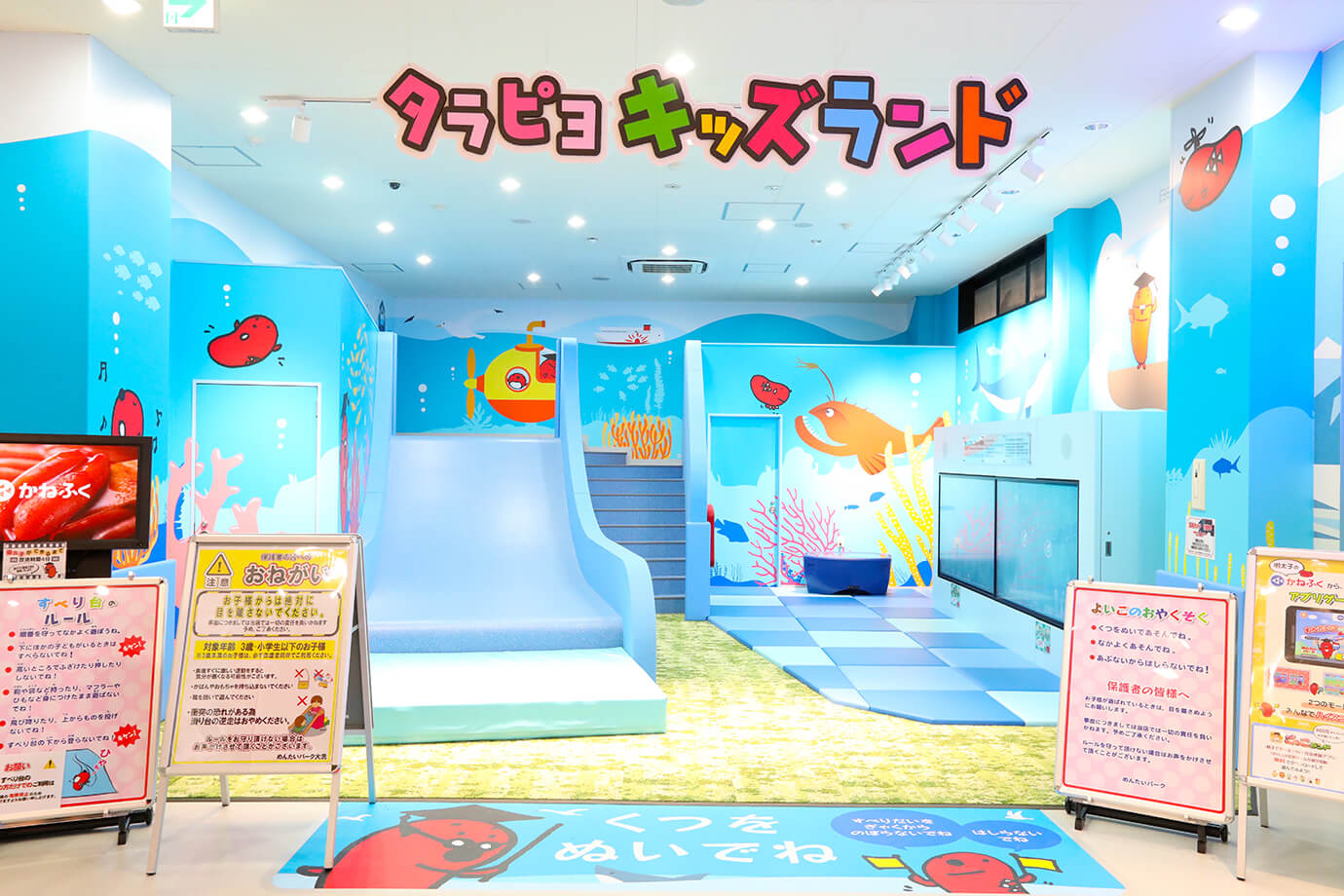
In 2023, "Kids Land" opened, where children can play for free. The large slide in the pop-themed space makes you feel like you are underwater. It’s a fun place to play, even on rainy days.

"A blackboard where Little People live" has been newly installed on the wall in collaboration with teamLab Planets. Even adults are fascinated by the reactions of the “Little People” on the blackboard when it is touched.
There is a wide variety of innovative Mentaiko menu items

The food corner offers an original menu featuring mentaiko. We recommend the "Onimori! Mentaidon", which costs 800 yen. A perfect bowl of mentaiko on a bed of rice! It comes with chopped nori and a secret sauce, so you can enjoy tasting the different flavors.

The jumbo rice balls are the most popular option, and they come in four varieties. Options including fresh mentaiko, tarako kombu, grilled tarako, and grilled mackerel mentaiko. All are priced at 390 yen.

The jumbo size feels heavy in your hand. It is packed with filling!
The store is full of rare treasures!
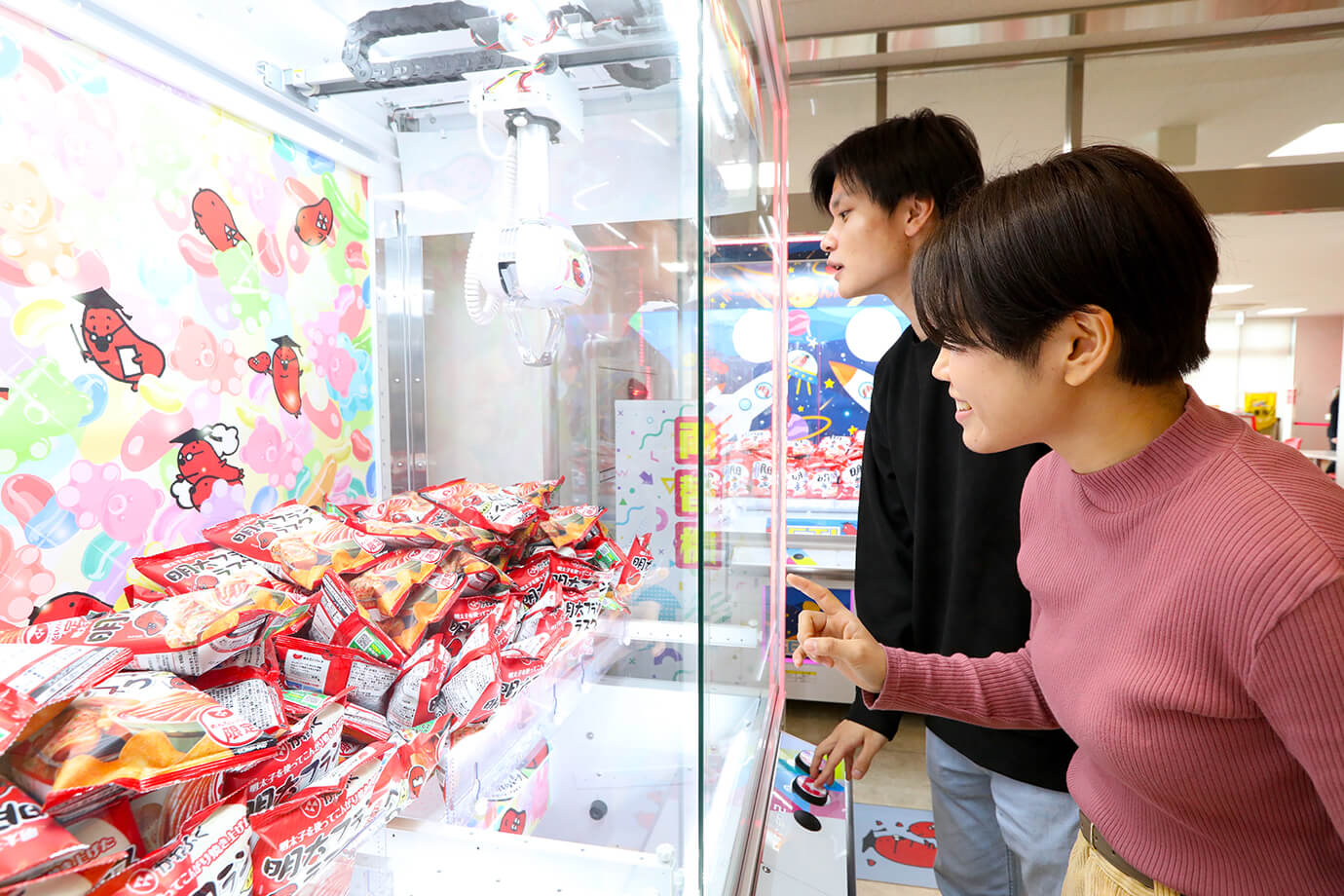
There is even a UFO catcher! Prizes include precious "Mentaiko Chips" and "Mentai French Rusks", which are not sold at the shop. You can’t help but want to grab them!

I won a “Mentai French Rusk!” What a treasure!

The shop is filled with a variety of products that can only be bought at the park. The most popular is "Dekitate Mentaiko Mix with Matured Sauce" (400g for 2,250 yen). This is a bargain package of randomly selected mentaiko in various shapes and sizes. The "Tarapiyo Zipperbite" shown in the photograph (on the left) sells for 700 yen and can be attached to pouches or pen cases as a stylish zipper catch. Fluffy Tarapiyo stuffed toy straps (on the right) are 500 yen, and real-looking mentai capsule toys cost 300 yen.
Mentai Park Oarai
Address:8255-3 Isohama-cho, Oarai-machi, Ibaraki Prefecture (located at Oarai Port No. 2 Wharf)
Telephone:029-219-4101
Admission:free
Opening hours:9:00-17:00 (9:00-18:00 on Saturdays, Sundays, and national holidays); factory operation is from 9:00-16:30 (sometimes the factory does not operate on Sundays and national holidays)
Closed:Open every day
Aqua World Ibaraki Prefectural Oarai Aquarium
Must-see live performances! Enter a vibrant underwater world!

Aqua World Oarai is a large aquarium facing the Pacific Ocean. The aquarium contains 68,000 exhibits of approximately 580 species of living creatures, with the largest number of shark species in Japan! The seven-story building is divided into nine themed areas, including the Encounter Sea Zone and Mystic Sea Zone.

As you proceed through the entrance, you will see the impressive "Large Aquarium of the Sea of Encounters". 25,000 fish of approximately 80 species swim in a huge tank with a water volume of around 1,300 tons. "IWASHI LIFE" is held three times a day and is not to be missed!
The sea lions’ comical performance is great fun to watch.

Dolphins and sea lions appear daily in the ocean live shows held at the indoor "Ocean Theater”. Adorable sea lions and dolphins frolic against borrowed scenery of the Pacific Ocean.

The dolphins’ performance is truly dynamic, with high jumping and kicking balls on the water. If you are brave enough, why not go to the front row! Sometimes you will get wet!

Humboldt penguins and California sea lions live outdoors on the Ocean Terrace in the Wonderful Sea Zone.
There are many different ways to eat! Animal feeding time

In the Heartwarming Sea Zone, visitors can see tufted puffins, spotted seals, and Canadian otters. Through the glass you can clearly see the movements of their paws and feet in the water.

During the fun "feeding time," you can watch the animals eat while listening to commentary from the zookeepers. I wonder why the otters look up when eating! (The timetable varies depending on the season, so please check the website.)

The zookeepers love the spotted seals. They are well behaved and eat from the zookeeper’s hand.
Don’t forget the free admission area, which offers both shopping and dining.

"Souvenir Shop Molamola" is located in the free zone just before the entrance, and sells original "Dora Mambou” snacks, which are very popular at 1,296 yen for six pieces.
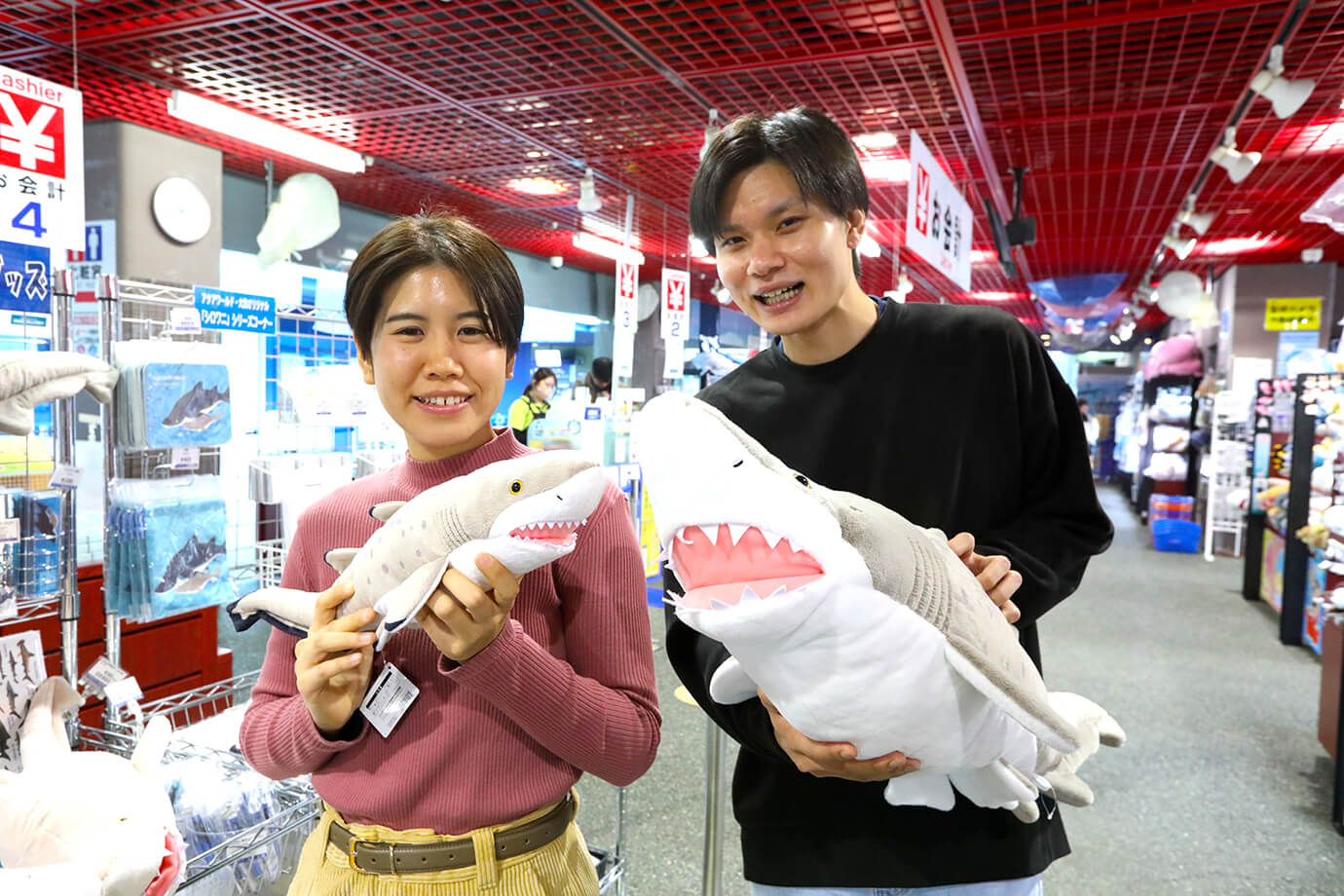
The shop also sells stuffed toy sharks with elaborately reproduced bodies. The free admission area also has a food court where visitors can enjoy a wide variety of flavors, including seafood rice bowls, sushi, and takoyaki (octopus dumplings) while looking out across the Pacific Ocean.
Aqua World Ibaraki Prefectural Oarai Aquarium
Address:8252-3, Isohama-cho, Oarai-machi, Ibaraki Prefecture
Telephone:029-267-5151 [voice guidance]
Admission:adults - 2,300 yen; children (elementary and junior high school) - 1,100 yen; infants - 400 yen
Opening hours:9:00-17:00 (last admission: 16:00) * Opening times vary depending on the season. Please check the website for details.
Closed:The aquarium is sometimes closed for maintenance.
Kaisen Sushi Kaikatei
Taste monkfish, a winter delicacy, at a sushi restaurant in a fish market.
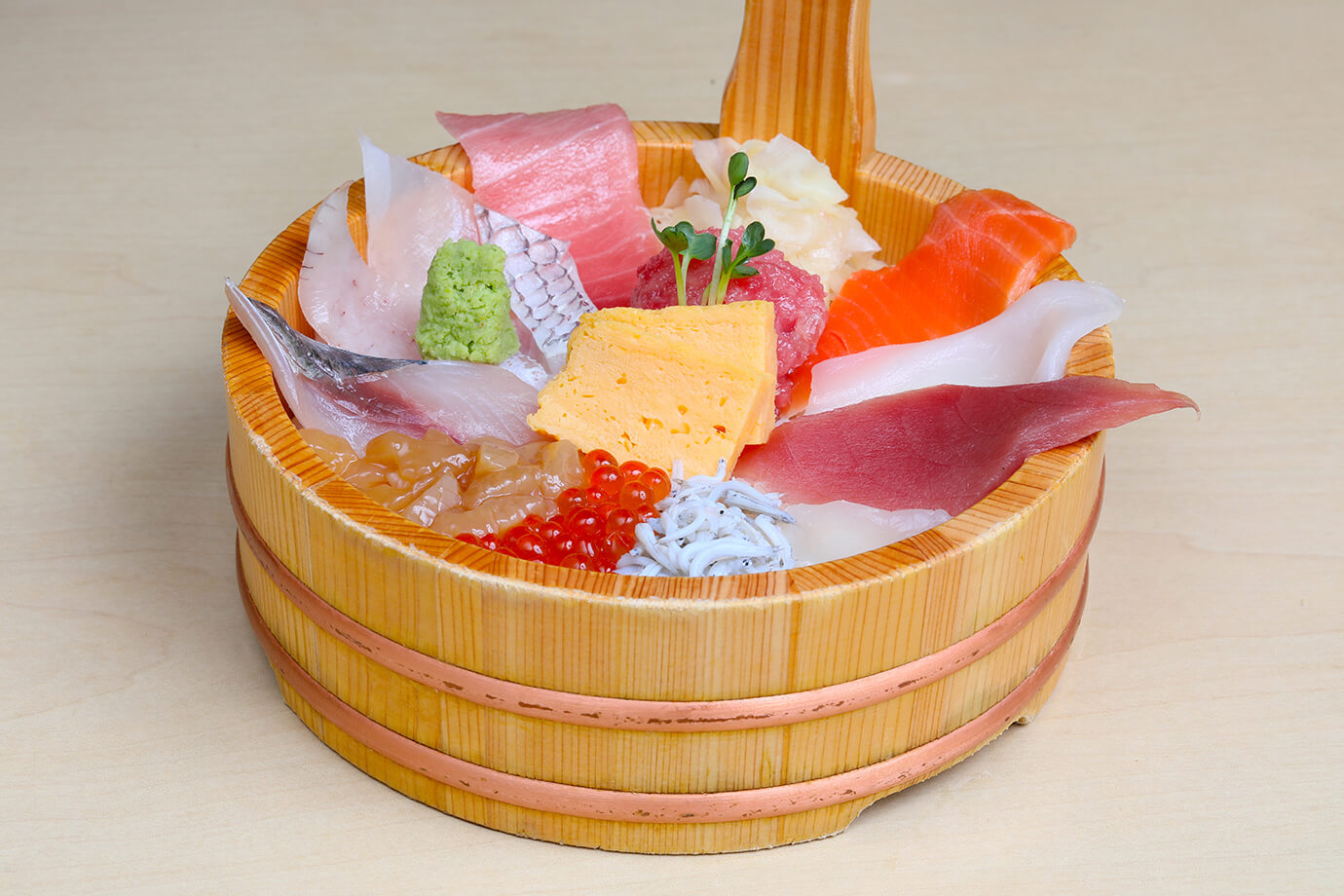
Nakaminato Fish Market has 11 stores right in front of Nakaminato Fishing Port. The area is crowded with tourists who come to purchase the freshest seafood and dried fish, and to enjoy gourmet seafood dishes. This time we visited Kaisen Sushi Kaikatei, which is the only sushi restaurant in the area. The photo shows the famous "Gossori Kaisendon" (seafood bowl), which costs 2,200 yen. This luxurious dish contains local fish, medium fatty tuna, salmon roe, and scallops!

The brightly lit restaurant has both table seating and counter seating for a relaxed dining experience.
Ankou-nabe (monkfish stew) is also available as a winter special!
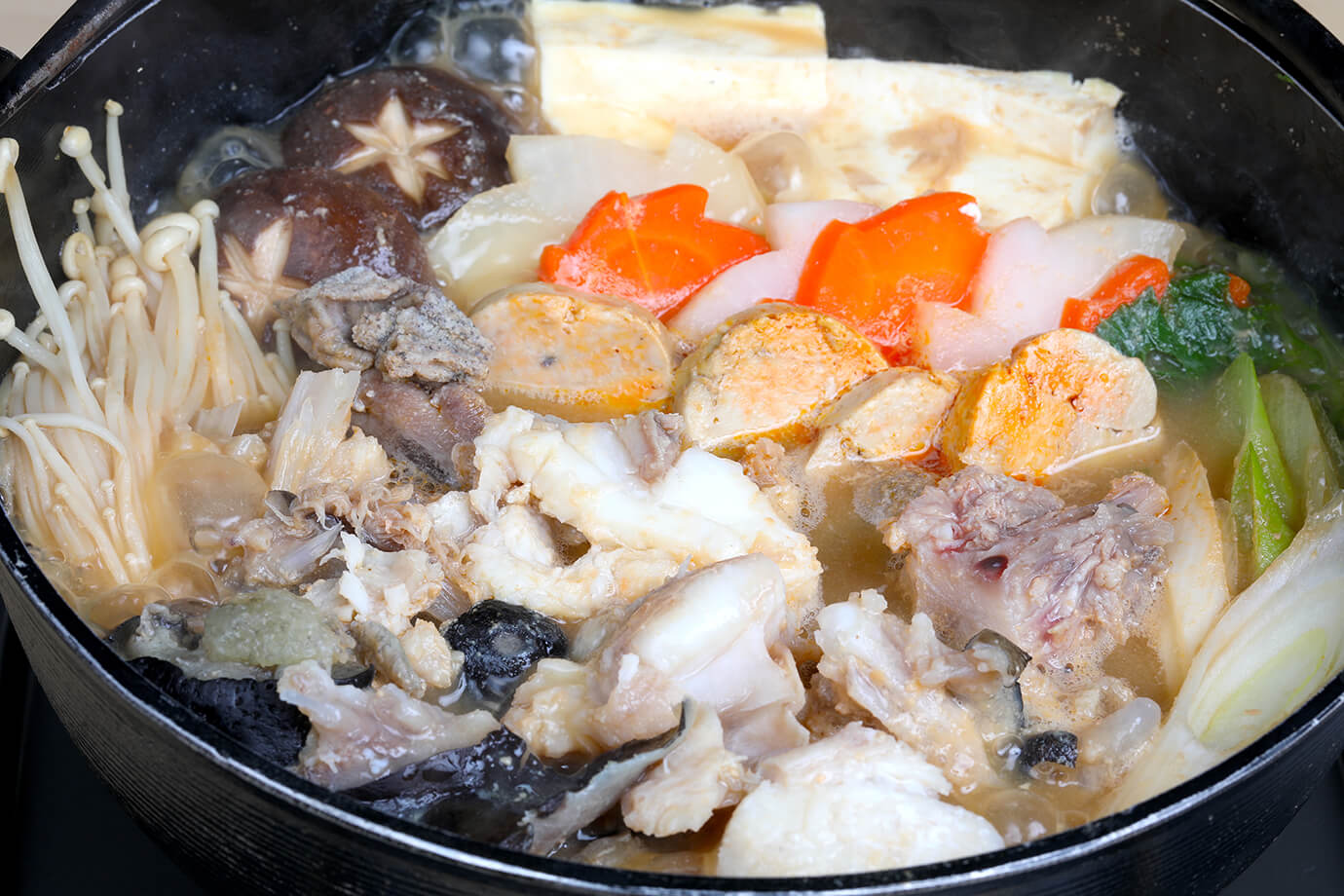
The purpose of this visit was to try the monkfish, which is a winter delicacy in Ibaraki Prefecture. Monkfish are at their best in winter, when their livers have grown larger. At Kaikatei, you can order ankou-nabe for just 3,300 yen per person from November to late March. (The photo shows a serving for two people, which is the minimum serving.)

Monkfish liver is roasted and combined with an original miso paste in a nabe option called "Deep Roasted Monkfish Liver with Blended Miso". The thick, rich broth complements the ingredients perfectly.
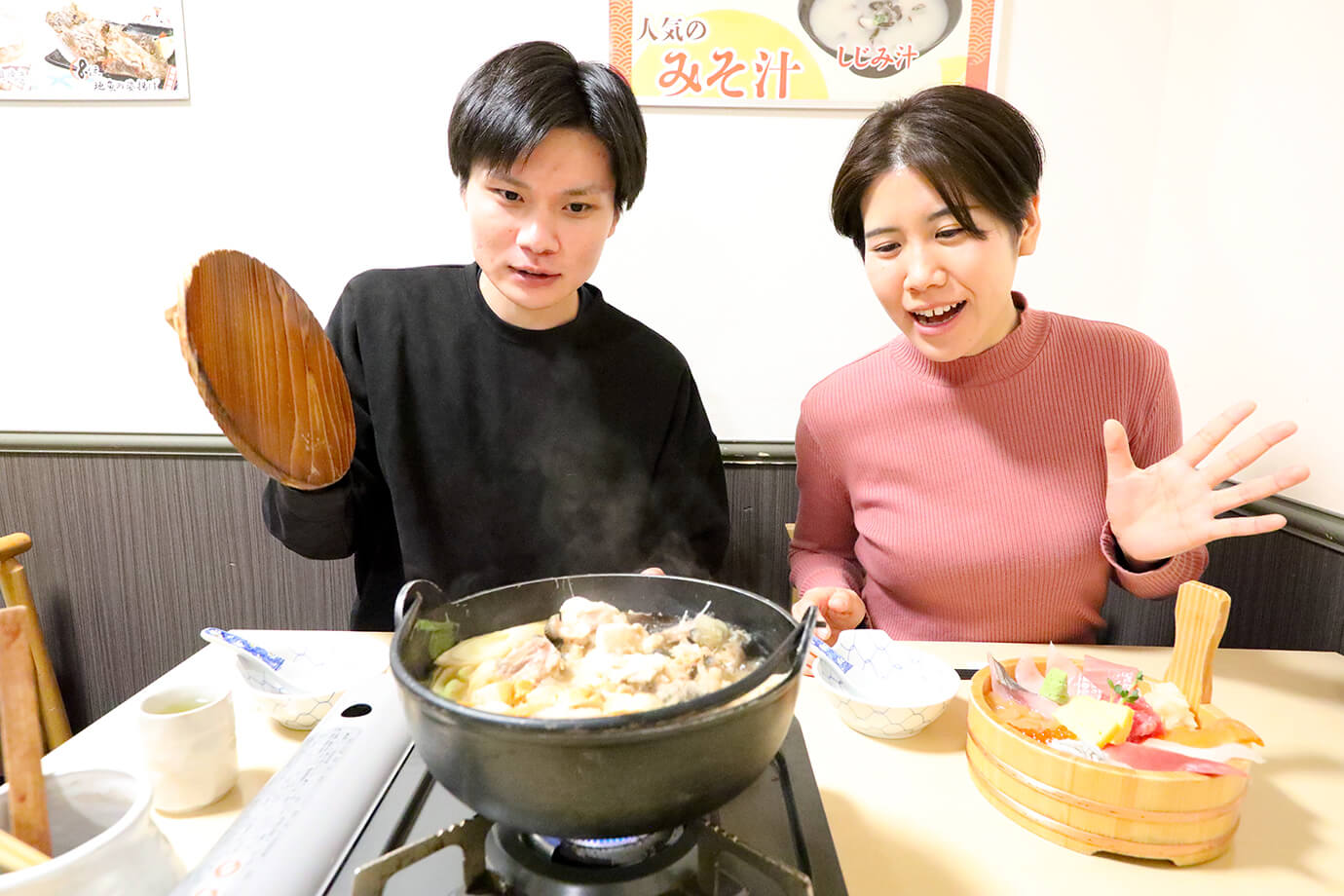
When the flesh of the monkfish has turned white, it is ready to eat. You can enjoy the difference in texture between the liver and skin. Order an additional "zosui set" for 330 yen and enjoy every last drop of soup.

Various a la carte dishes, including deep-fried monkfish and monkfish liver, are also available. Of course, the nigiri sushi are also very well known. The "Nakaminato beach local fish nigiri" set, which has 12 pieces of premium quality fish for 2,750 yen, is highly recommended.
Kaisen Sushi Kaikatei
Address:19-8 Minato Hon-cho, Hitachinaka City, Ibaraki Prefecture
Telephone:029-263-0025
Opening hours:11:00-17:00 last orders (10:30-18:15 last orders on Saturdays, Sundays and national holidays)
Closed:Wednesdays (open if Wednesday is a national holiday)
Sakaba confectionery workshop
Fruit Sandwich Castella is a new product from a long-established castella store!

The new "Fruit Sandwich Castella" is a hot topic among visitors to this long-established confectionery store, which has been in business for 111 years. The castella, which is made with the highest quality glutinous rice syrup and local eggs, is moist and rich and goes perfectly with fresh cream!
The photo shows the "Marugoto Mikan" (520 yen), which is made with a single mandarin orange, and the "Vineberry" (750 yen), which is topped with local brand strawberries (on the right).

The castella are generously filled with fresh cream, which makes it hard to decide where to start! Other fresh fruits can also be tasted as toppings, such as the Premium Mix, which is a topping of seasonal fruit for 700 yen. The Double Kiwi allows customers to compare green kiwi and gold kiwi for 520 yen.

There are benches in front of the store, so you can enjoy whatever you buy right away! Even the hotel staff were delighted and commented that it was the most luxurious castella they’d ever eaten!
Famous confectionaries selected as the top ten tastiest souvenirs of Ibaraki Prefecture

Hitachinaka City's newest sweet, "Ichigo Dappe" sells for 140 yen per piece. This dacquoise sandwich contains jam blended with strawberries with vines, a specialty of Hitachinaka City's Ajigaura district. It has an irresistible fluffy yet crispy texture.

The confectionary shop is run from a single house located not far from Nakaminato Fish Market. Using the traditions of sponge cake making, the owner and his wife carefully craft each of the sweets they sell.
Sakaba Confectionery Workshop
Address:7-2 Minato Hon-cho, Hitachinaka City, Ibaraki Prefecture
Telephone:029-262-3534
Opening hours:9:00-18:00
Closed:Wednesdays (open if Wednesday is a national holiday, but with a substitute holiday); other irregular holidays
Hoshi-imo Shrine (Horide Shrine)
Get "what you want" at the golden shrine!
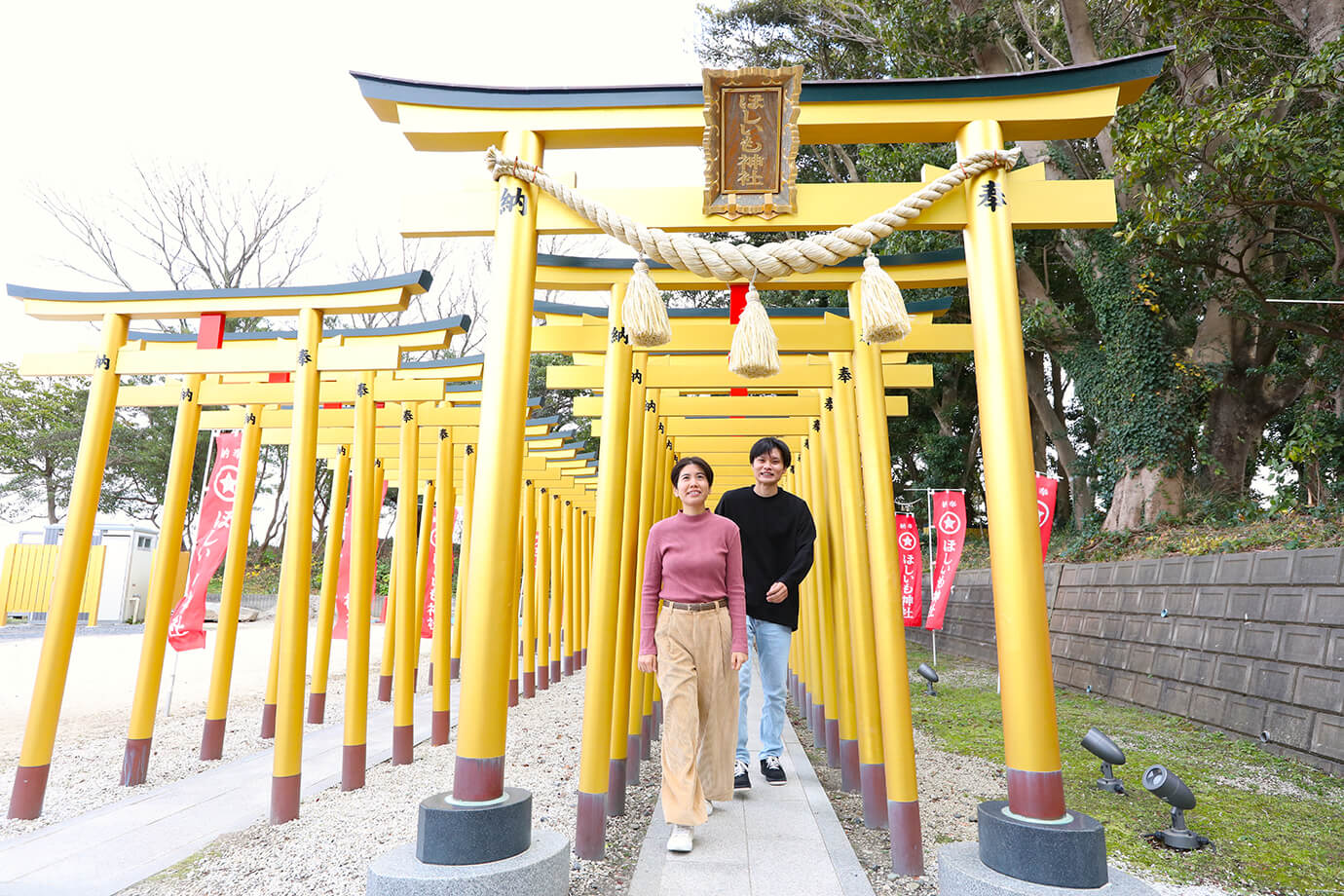
Horide Shrine was built in 1663 and was once visited by Mitsukuni Mito. The Hoshi-imo Shrine was built in a corner of Horide Shrine in 2019. The “get what you want” shrine may sound like a joke, but it has gained a reputation as a shrine where all “hoshii mono” (things you want) can be obtained.

The 52 torii gates that line the approach to the temple are colored in the gold of dried sweet potatoes (hoshi-imo). Why not visit and pray for what you want?
The “hoshi-imo-colored motorcycle” has also become a popular spot for taking photos.

Mr. Miyamoto, the chief priest of the shrine, posed for us on the motorcycle. He even colored his own motorcycle to create a photo spot that would rival the torii gates. The name of the bike is, of course, "Hoshi-imo".

On weekends, "Hoshi-imo" is positioned in front of the torii gate and serves as a great location for taking photos. Many bikers who have heard about the bike also come to visit.

"Hoshi-imo Shrine" was created because the neighborhood is the largest production area in Japan for dried sweet potatoes (“hoshi-imo”). Everything in the precincts, from the vending machines and ema (votive picture tablet) to the charms, is in the “hoshi-imo” color. There are plans to add more torii gates in the future to revitalize the town and create a buzz.

In the precincts, we found the "smallest potato field in Japan" overlooking the Pacific Ocean. This powerful shrine is visited by celebrities and famous people. What will you ask for when you visit? Why not think about what you really want?
Hoshi-imo Shrine
Address:172-2 Ajigaura-cho, Hitachinaka-shi, Ibaraki Prefecture
Telephone:029-265-9533
Opening hours:The precincts are always open to the public
Closed:Open every day
Daimaruya
There are more than 30 kinds of additive-free hoshi-imo for you to taste!

Founded in 1897, Daimaruya is a long-established store engaged in the production, manufacture, and sale of dried sweet potatoes. The store is filled with a wide variety of additive-free hoshi-imo. The most popular item is the "Hira hoshi-imo three-type assortment" for 1,450 yen. You can choose any combination you like, such as "Beniharuka" (soft and full of sweetness), "Silk Sweet" (smooth tasting), "Mitsuki Imo" (sweet potato full of honey).

In addition to the familiar "Hira hoshi-imo," various other processing methods are used, including "maru (whole) hoshi-imo" and "atsugiri (thick-cut) type”. The "maru hoshi-imo" has a semi-raw texture, similar to a sweet potato.
“Oimo gelato” has a natural, gentle sweetness.

After shopping, visit the "Gelato Sales Corner" in the store. Six varieties of sweet potato are always on offer, including "Murasaki-imo" and "Beni-daidai". There is also a non-egg gelato that does not contain preservatives, coloring agents, or even eggs. Single - 300 yen; double - 500 yen.

A huge sculpture commemorating the 100th anniversary of the creation of hoshi-imo and the 110th anniversary of the founding of Daimaruya. At the entrance, visitors are greeted by a dinosaur sculpture.

Reservations can be made for a minimum of two adults during the January-February period. Please inquire if you are interested.
At the premises’ drying facility, many hoshi-imo are being dried in the sun (visitors can only see this from outside).
Daimaruya offers a "hoshi-imo making experience" (by reservation only) every Saturday from 11:00. Reservations can be made for a minimum of two adults from January to February. Please inquire if you are interested.
Daimaruya
Address:18-38 Shakamachi, Hitachinaka City, Ibaraki Prefecture
Telephone:029-263-7777
Opening hours:10:00-17:00 (9:00-17:00 on Saturdays, Sundays, and national holidays); Cafe Corner close at 16:30.
Closed:Open every day
JR-East Hotel Mets Mito
The hotel plan with inclusive ekiben lunch has become very popular. A simple and user-friendly hotel

This large hotel, with a total of 102 rooms, is a one-minute walk from the North Exit of JR Mito Station. The hotel’s interior design incorporates the ume (Japanese plum) tree, which is the tree of Mito City, with Japanese paper, creating a high-quality, relaxed atmosphere. The front desk has a selection of bath powder and other amenities for you to choose from, so please take what you like to your room.

There are three types of rooms: single, double, and twin. Simmons-made beds and two types of Nishikawa-made pillows will help you sleep well at night. The bathrooms were renovated in 2020 and feature long bathtubs to stretch your legs, as well as an air-in shower.
For breakfast, you have a choice of using a cafe in the station building or taking an ekiben.

Normally, morning breakfast is taken at Tully's Coffee & Tea, which is located in Excel in the Mito Station Building. For those who would prefer not to leave the hotel in the morning, we recommend the "Ibaraki Daily Ekiben Package Plan". Three types of ekiben using local ingredients are offered daily, giving guests the ekiben experience from the comfort of the hotel.

The Kairakuen bento is beautifully presented with Ibaraki shirasu (whitebait), komatsuna (Japanese mustard greens), shirataki (thinly stripped konnyaku), and kinpira (flavored burdock roots). Three types of bentos full of local flavor are offered on a daily menu, such as the "Okuji Shamoben" and "Hitachi Beef and Mountain Blessings Bento".

There is a spacious lounge on the first floor, where you can eat your ekiben lunch. A microwave oven and complimentary coffee and tea service are also available.

The elevator also has a Japanese-style interior design. The floor information boards and guest room signs are made of Nishinouchi washi paper, a specialty of Ibaraki Prefecture.

There is convenient access to sightseeing in nearby Mito and Oarai. The simple hotel, designed for functionality, is popular for business and leisure, and among students preparing for examinations.
JR-East Hotel Mets Mito
Address:1-1-1 Miyamachi, Mito City, Ibaraki Prefecture
Telephone:029-222-3100
Check-in:15:00
Check-out:11:00
Costs:Please refer to the official website.
Kairakuen Garden
Admire the glossy ume blossoms in the garden overlooking Lake Senba.

Mito Kairakuen Garden is known as one of the "Three Famous Gardens of Japan" along with Kenrokuen Garden in Kanazawa and Korakuen Garden in Okayama. The garden was created by Nariaki Tokugawa, the ninth daimyo of the Mito Domain, in the Edo period. Located on a hill overlooking Lake Senba, a beautiful ume plum orchard is maintained on the undulating hills.

The best time to see the ume blossoms is from late February to mid-March. About 3,000 ume trees of approximately 100 varieties bloom one after another. The park is filled with the fragrance of flowers and attracts many flower-viewing visitors from within and outside Ibaraki prefecture.

The park also contains many attractions that can be enjoyed outside of the ume blossom season, such as the Kobuntei building designed by the daimyo, a stone monument to Shiki Masaoka engraved with a haiku, and a moso bamboo forest.
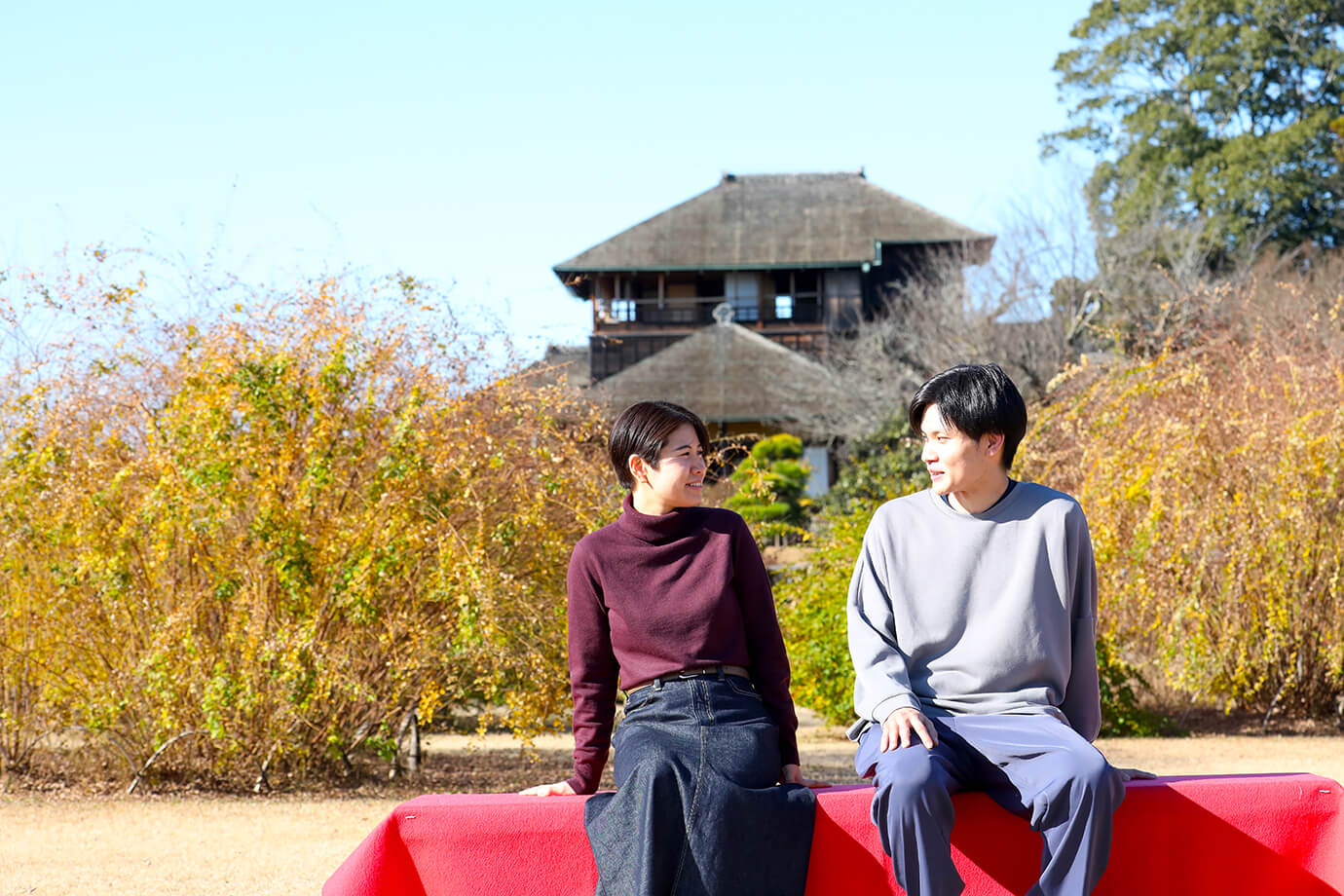
Kobuntei, seen in the background, is a one-story wooden building built by Tokugawa Nariaki as a hall where he and the people of the domain could enjoy themselves. It was destroyed by fire in the Mito air raid of 1945, but was restored over a three-year period beginning in 1955. Incidentally, "Kobun" is a different name for ume blossoms.
Enjoy seasonal views and elegant desserts at Kobuntei

At Kobuntei, visitors are required to take off their shoes. In the Okugoten (private quarters), the rooms are named after plants, such as "Sakura-no-Ma" (Room of Cherry) and "Momo-no-Ma" (Room of Peach), each with paintings on fusuma (sliding doors) by Japanese painters. Seeing flowers whenever they visit makes visitors feel truly welcomed.
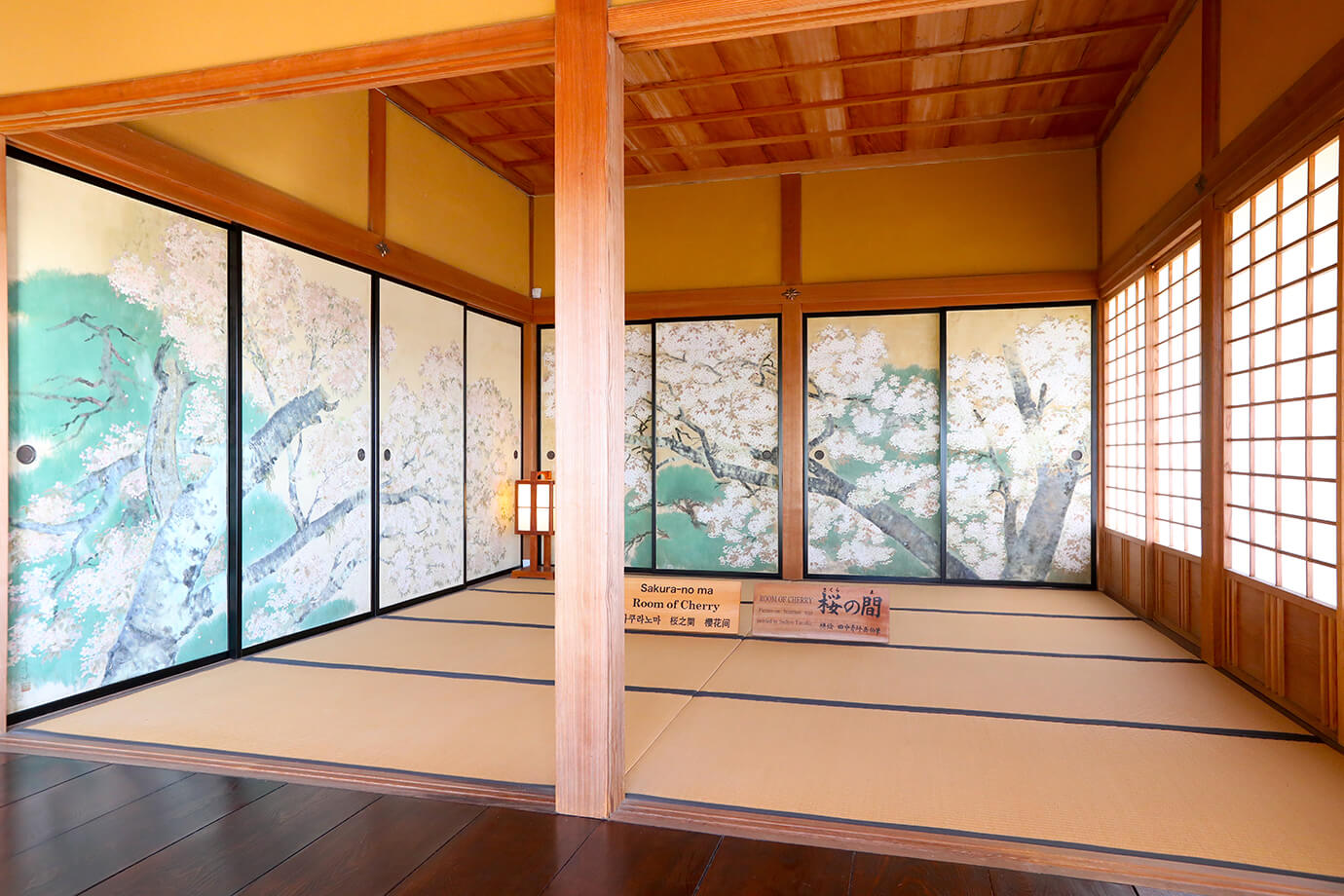
Beautiful sliding door paintings can also be seen in the "Sakura-no-Ma” room. The premises contain many attractions, including the "Goza-no-Ma" where the daimyo welcomed guests, and the "Rakujurou", which offers spectacular views in three directions.

At Cafe Raku, located in Kobuntei’s Nishi-Nuri-en Hall, you can enjoy an elegant tea while viewing Lake Senba and Sakurayama. An elegant masu cake "UME" (770 yen) and blended coffee set is 1,200 yen.

Isobe dango (with tea) is 660 yen. The dango are faintly fragrant with a hint of bamboo grass, lending them an elegant flavor. They are served with hot tea.
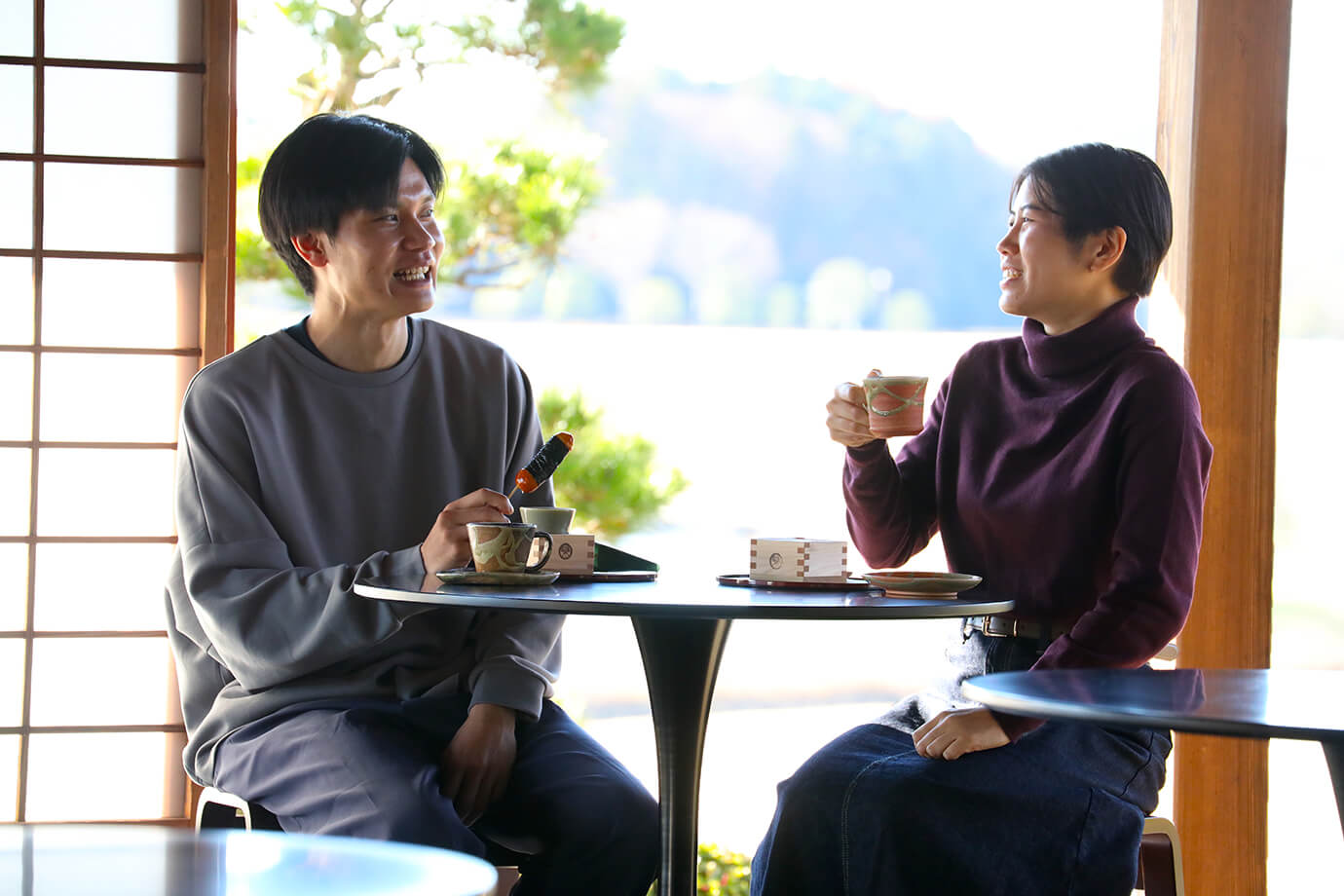
The floor is made of lacquered board. This is a great place to spend time experiencing ancient culture and feeling the changing of the seasons.
Kairakuen Garden
Address:1-3-3 Tokiwa-cho, Mito City, Ibaraki Prefecture
Telephone:029-244-5454 (Kairakuen Park Center)
Admission to the garden: Adults - 300 yen, children/70 years old and over - 150 yen
Opening hours:6:00-19:00 in the main garden (7:00-18:00 from October to mid-February). The area excluding the main garden is always open.
Closed:Open every day
Kobuntei
Admission to the building:Adults - 200 yen, children/70 years old and over - 150 yen
Opening hours:9:00-17:00 (9:00-16:30 from October to mid-February)
Closed:Open every day
Kodokan
A university where successive daimyo studied during the Edo period

Kodokan was founded in 1841 by Nariaki Tokugawa, the ninth daimyo of the Mito Domain. It was one of the largest clan schools in Japan. It emphasized both literary and military arts, and introduced Confucian studies, etiquette, history, and astronomy in academics, as well as a variety of subjects such as swordsmanship and spearmanship in the martial arts. Start the tour from the main gate (a nationally designated important cultural property), which has traditional tile roofing.

Shizendo (also a nationally designated important cultural property) is where the last shogun, Yoshinobu Tokugawa, studied as a child. In 1868, after the restoration of imperial rule, Yoshinobu lived with restricted freedom in this room at Shizendo, the “Goza-no-ma".

A nagamochi, which was used in those days, is displayed in the room, and the wild ginger trefoil coat of arms can also be seen.

The Seicho (a nationally designated important cultural property), also known as Gakko Goten, is the central building of Kodokan. Here, in the "Seicho-Seiseki-no-Ma," the daimyo used to sit and watch academic and martial arts examinations.

Looking down at the tatami mats, you can see the wild ginger trefoil crest on the edgings of the mats.

A heart symbol can be seen on the onigawara tiles on the roof of the main building. This is a traditional Japanese "boar's eye" pattern, which is said to ward off evil and fire.

Kodokan is located in the Sannomaru area of Mito Castle, the residence of the Mito Tokugawa family. Today, the restored Otemon Gate and Ninomaru Sumiyagura can be seen in the Ninomaru area. Various "Gojoin" seals (300 yen per seal) are available at the Kodokan, so be sure to purchase one to commemorate your visit to the castle.
The huge Otemon Gate conveys the history of Mito Castle to the present day.

The Otemon Gate at Mito Castle towers over visitors at the front of Kodokan. It is 13 meters high and approximately 17 meters wide, and retains the style of the early Edo period. The Mitogaku Road (Road of Mitology) has been developed in the surrounding area, leading visitors to the ruins of Mito Castle Ninomaru Exhibition Hall, Mito Toshou-gu Shrine, and other historic sites related to Mito.
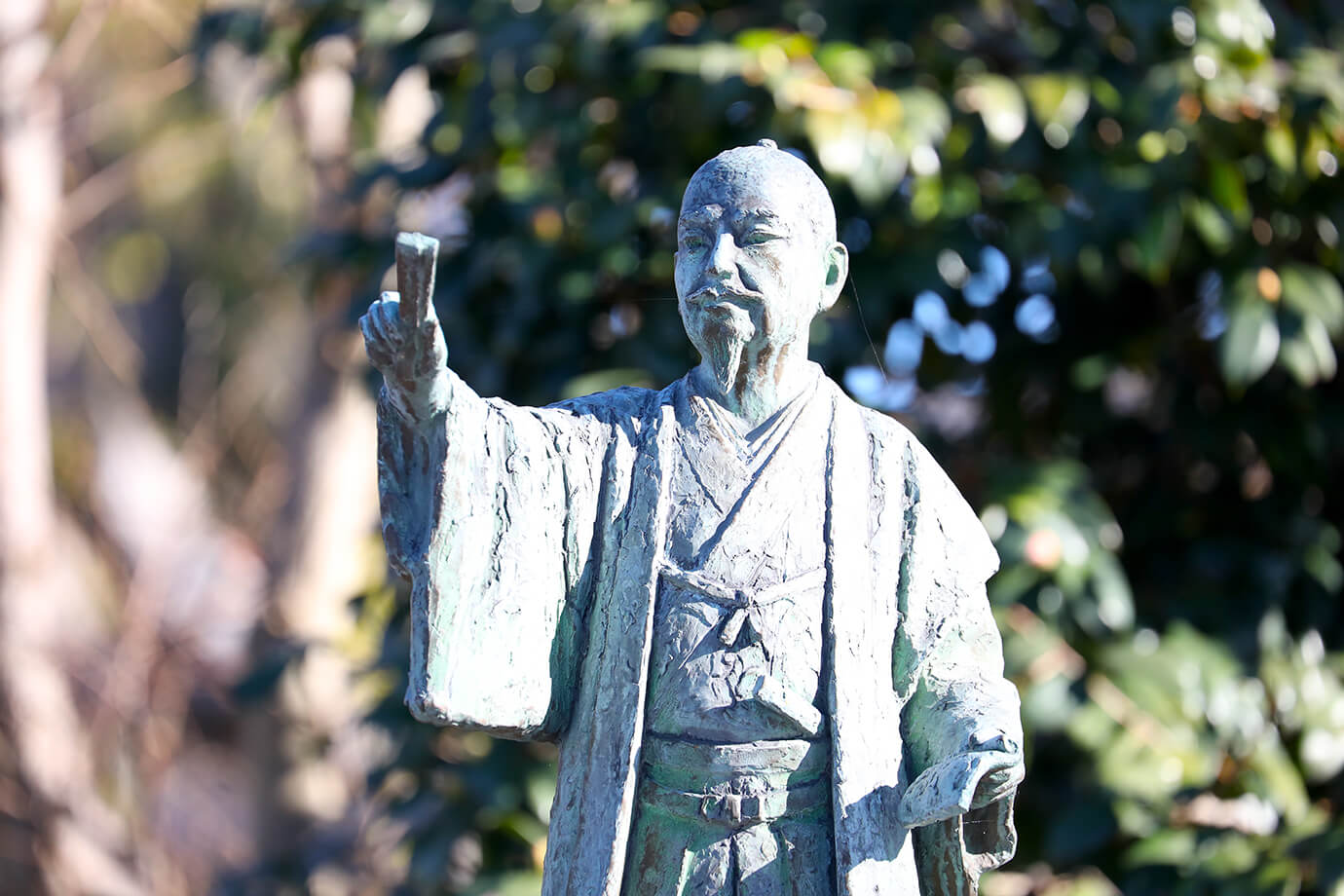
A statue of Prince Nariaki Tokugawa stands at the foot of the Otebashi Bridge. Strolling along the Mitogaku Road, you will see statues of Mitsukuni Tokugawa, Yorifusa Tokugawa, and other daimyo of the Tokugawa clan.
Kodokan
Address:1-6-29, Sanomaru, Mito City, Ibaraki Prefecture
Telephone:029-231-4725 (Mito City Public Works Office, Kairakuen Park Section, Kodokan Office)
Admission:Adults - 400 yen; elementary/ junior high school students - 200 yen
Opening hours:9:00-17:00 (9:00-16:30 from October to mid-February*)
Closed:December 29 to December 31 *Varies depending on the start of the Ume Festival.
Tonkatsu Hakkai
Aiming to be the best restaurant in Japan, with truly original tonkatsu

Tonkatsu Hakkai aims to make the most delicious tonkatsu in Japan. It offers the finest tonkatsu made with "Rose Pork", a brand-name pork from Ibaraki, and carefully selected breadcrumbs. The photo shows the "Mito Natto Ume Grated Tonkatsu", which can be found on the back of the menu and is priced at 2,950 yen. The owner says, "We're always ready to serve, so please feel free to order what you like, just like a regular customer!"
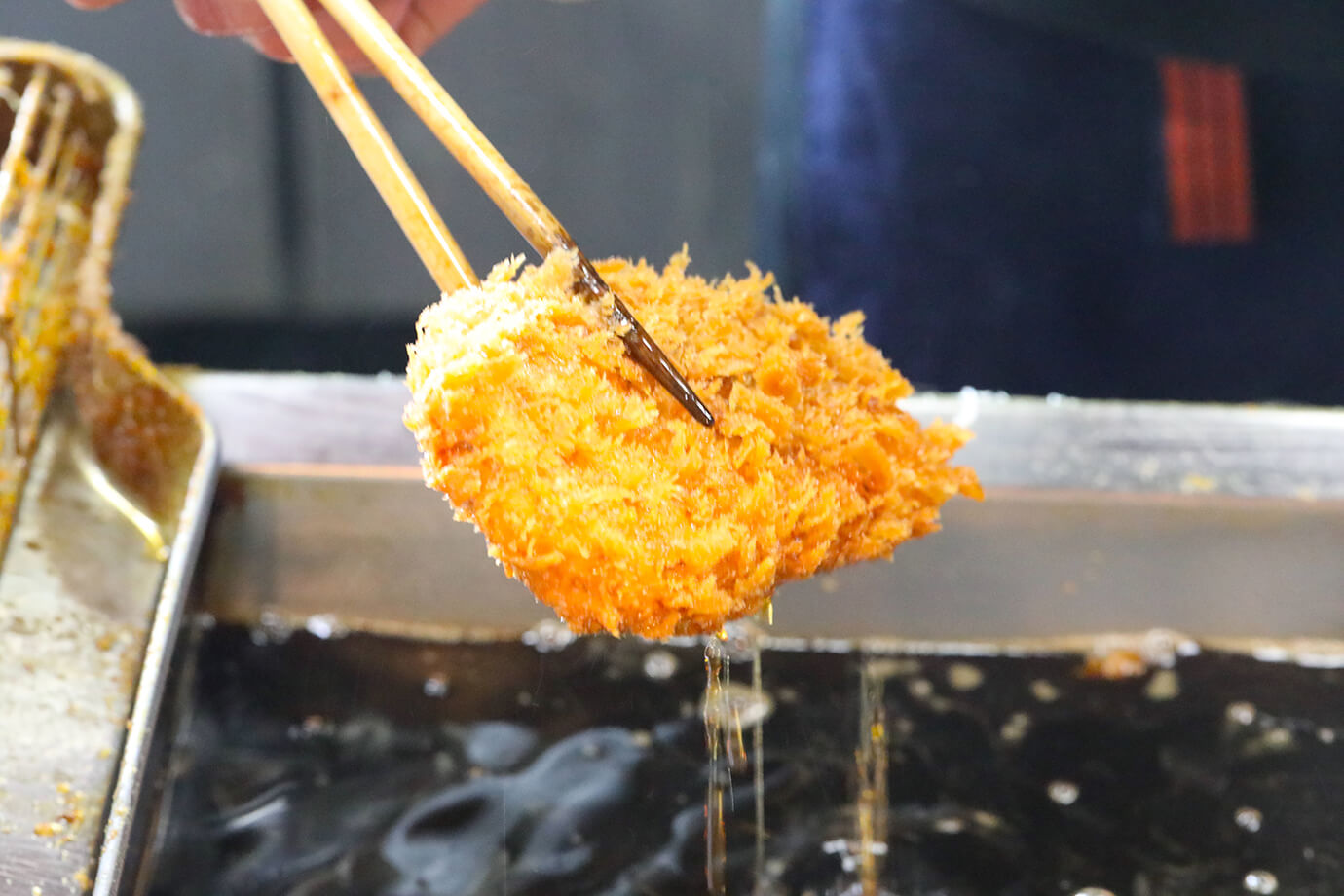
The coating is made using purely white breadcrumbs baked in a factory specializing in breadcrumbs. It is slowly deep-fried at a low temperature in 100% vegetable oil that blends corn oil and sesame oil.
We were served with freshly deep-fried tonkatsu.

Special Loin Tonkatsu Set Meal - 2,600 yen. What a crispy coating! Rose pork is thick yet soft, and served with homemade sauce and rose salt according to your preference.

The cabbage servings are so generous! It’s so good to be served with a large portion of vegetables during a time of sharply rising prices. There are 16 varieties to choose from, including "ume grated tonkatsu," "spicy miso tonkatsu," and "cheese tonkatsu”! You can choose from loin, fillet, upper fillet, and special loin cutlets.

Above the counter is a shop curtain displaying “Rose Pork”. You can enjoy your meal in comfort, either at the table seating or counter seating.

The owner has over thirty years of experience serving tonkatsu. At first glance, he may appear a little eccentric, but as a true “Mittopo” local to the Mito area, he welcomed us in a very friendly manner.
Tonkatsu Hakkai
Address:600-54 Kasahara-cho, Mito City, Ibaraki Prefecture
Telephone:029-241-8029
Opening hours:11:00-14:00, 17:00-24:00
Closed:Open every day (sometimes closes on a temporary basis)
Kageyama Rihei Shoten
We took on the challenge of making traditional "Suifu lanterns" under the supervision of a craftsman!

Lantern-making has been popular in Mito since the Edo period (1603-1867). The lanterns made in Mito are called "Suifu lanterns”. Kageyama Rihei Shoten, founded in 1798, continues the tradition of "Suifu lanterns" and still finishes each and every lantern by hand.
At the workshop, you can try your hand at making Suifu lanterns.

The character "Kai", which is associated with Nariaki Tokugawa, is written in brush strokes. This time we painted inside the borders drawn by the craftsman, but you can also paint any text or illustration you like.
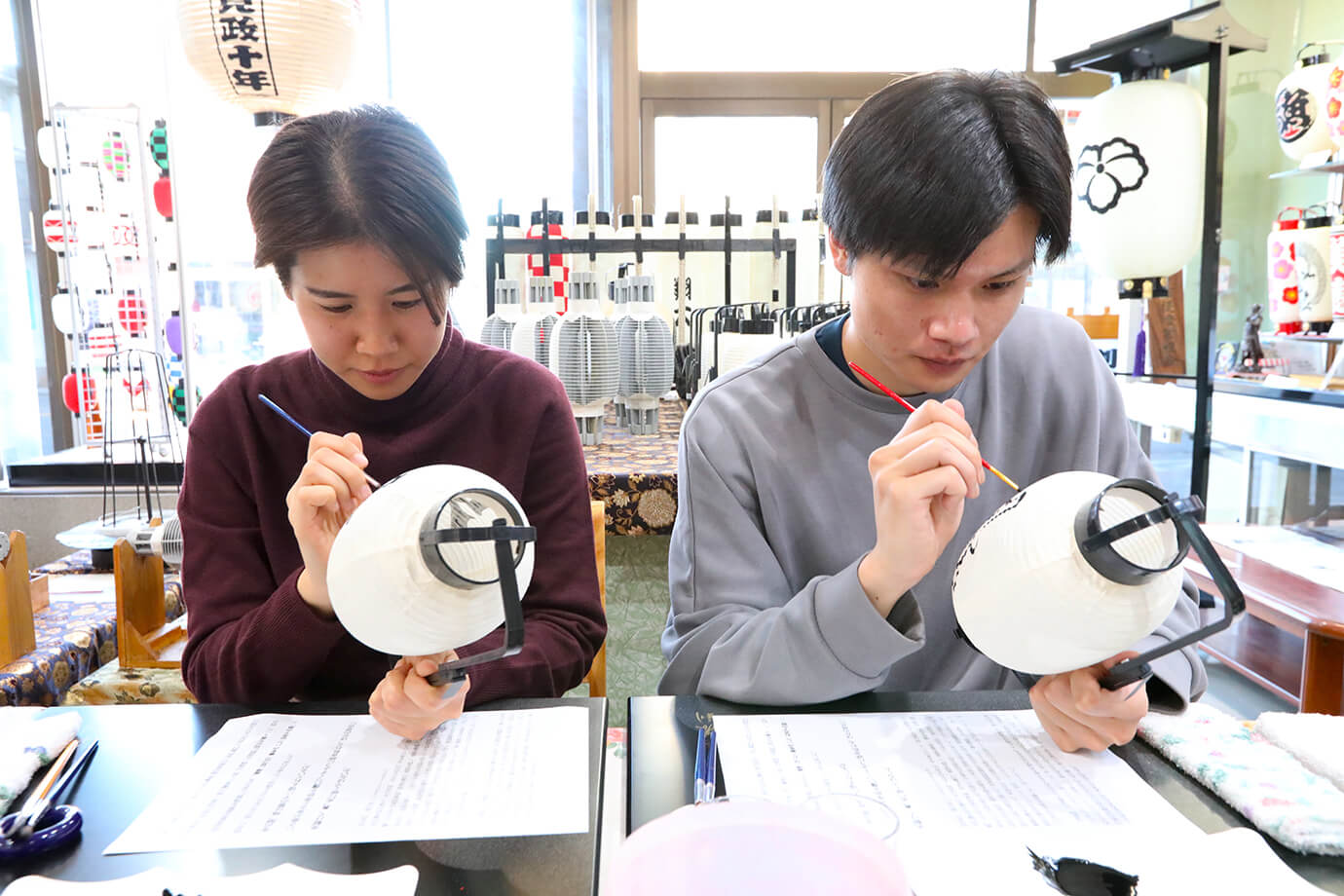
The hotel staff worked little by little and very carefully, and before long they were deep in concentration.
You can also learn the structure of a lantern through the experience of pasting Japanese washi paper.

Next, we tried our hand at making the body of the lantern! First, using eight wooden molds, the top and bottom are fixed to form the main lantern body.

There are small grooves in the wooden mold, and the wire is wound along the grooves. It gradually takes on a lantern-like shape.

Finally, glue and attach the Japanese paper to the wire. It’s important to use a brush to avoid wrinkles forming in the paper.

The lanterns we made were complete! When the glue dries, you can fold them up, which makes it easier to take them home with you. Because they are small, some people use them as room decorations or as mementos with their children's names on.

Koichi Kageyama, the ninth generation president, is the only traditional craftsman still making Suifu lanterns.
His friendly advice made the experience very enjoyable.

These lanterns were used at the G7 Interior and Security Ministers' Meeting in Mito, Ibaraki, which was held in December 2023. Ume blossoms on the lanterns added a touch of beauty to the venue.

Pop-style "Mito-chan" lanterns. Kageyama Rihei Shoten is trying to develop new and unique lanterns, including innovative lanterns with cartoons and illustrations.
Kageyama Rihei Shoten
Address:3-3-7 Hon-cho, Mito City, Ibaraki Prefecture
Telephone:029-221-3666
Fee:from 3,850 yen per person for the lantern experience, using a brush to write the "Kai" character only (reservation required)
Opening hours:9:00-18:30
Closed:Irregular closures
Excel Minami
Stop by the station to enjoy a drink and shopping while waiting for your train!

Excel Plum Street, which stretches to the ticket gate of JR Mito Station, features gourmet food and souvenir stores from Mito and other parts of Ibaraki prefecture. Ibaraki Jizake Bar Mito offers a wide selection of sake from 35 sake breweries in the prefecture. The local sake self-service machine charges 300 yen per cup, so you can enjoy sipping a little sake if you have time to spare.

The local sake assortment and snack set sells for 1,000 yen. It comes with three types of local sake of your choice and three snacks that change daily. A la carte snacks such as "Chicken liver stewed in wine" (300 yen) and "Ponzu sauce with monkfish liver" (350 yen) are also reasonably priced.

After purchasing a coin at the cash register, look for your favorite sake at the local sake self-service machine. If in doubt, please ask the store staff.
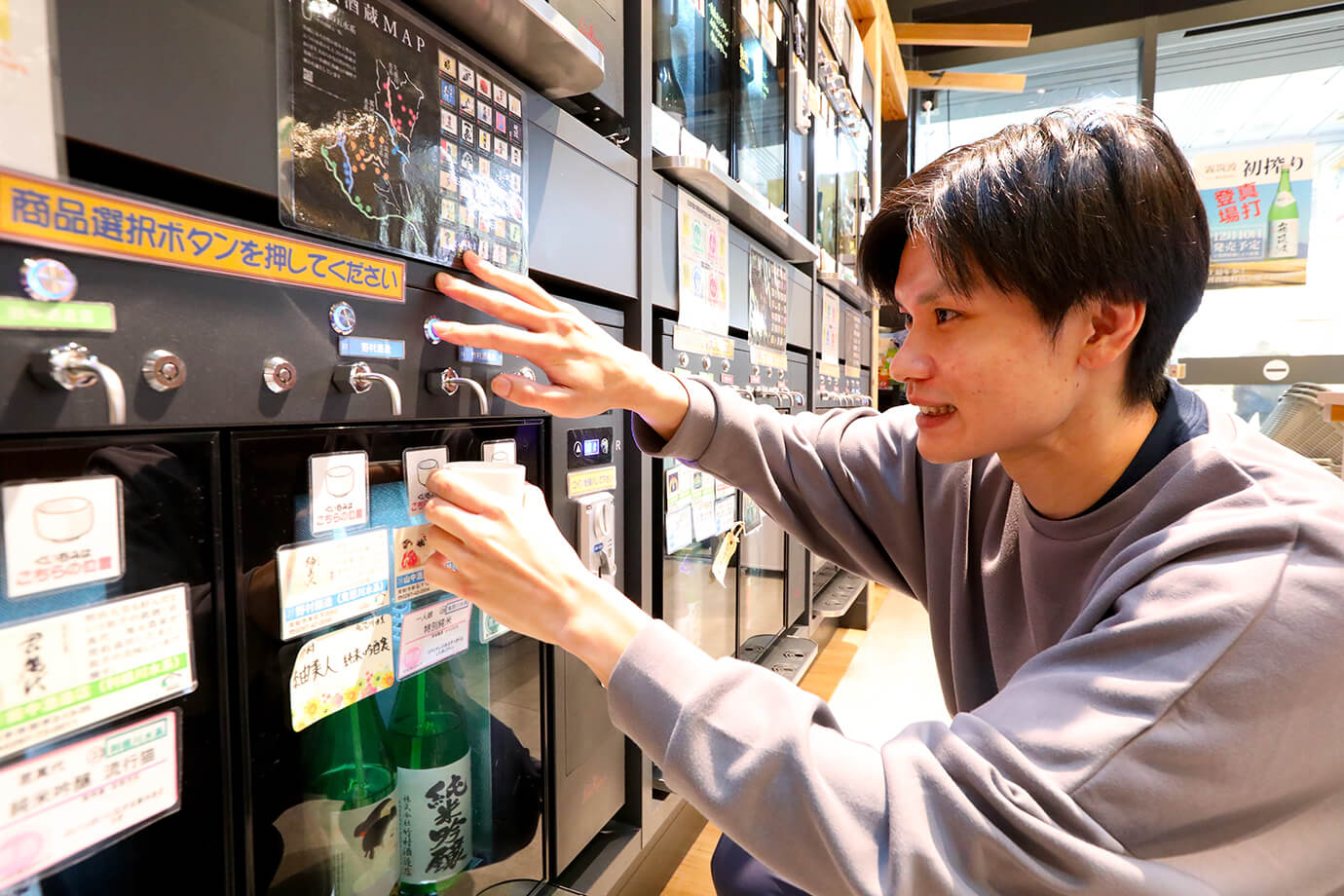
Hold your sake cup at the position shown on the sake cup picture. A cup of local sake is poured at the push of a button. At the shop's eat-in space, you can enjoy local sake in various options, such as "Sparkling Sake" and "Sake with Sashima Tea".
Rows of famous confectionaries and goods unique to Mito are available to buy
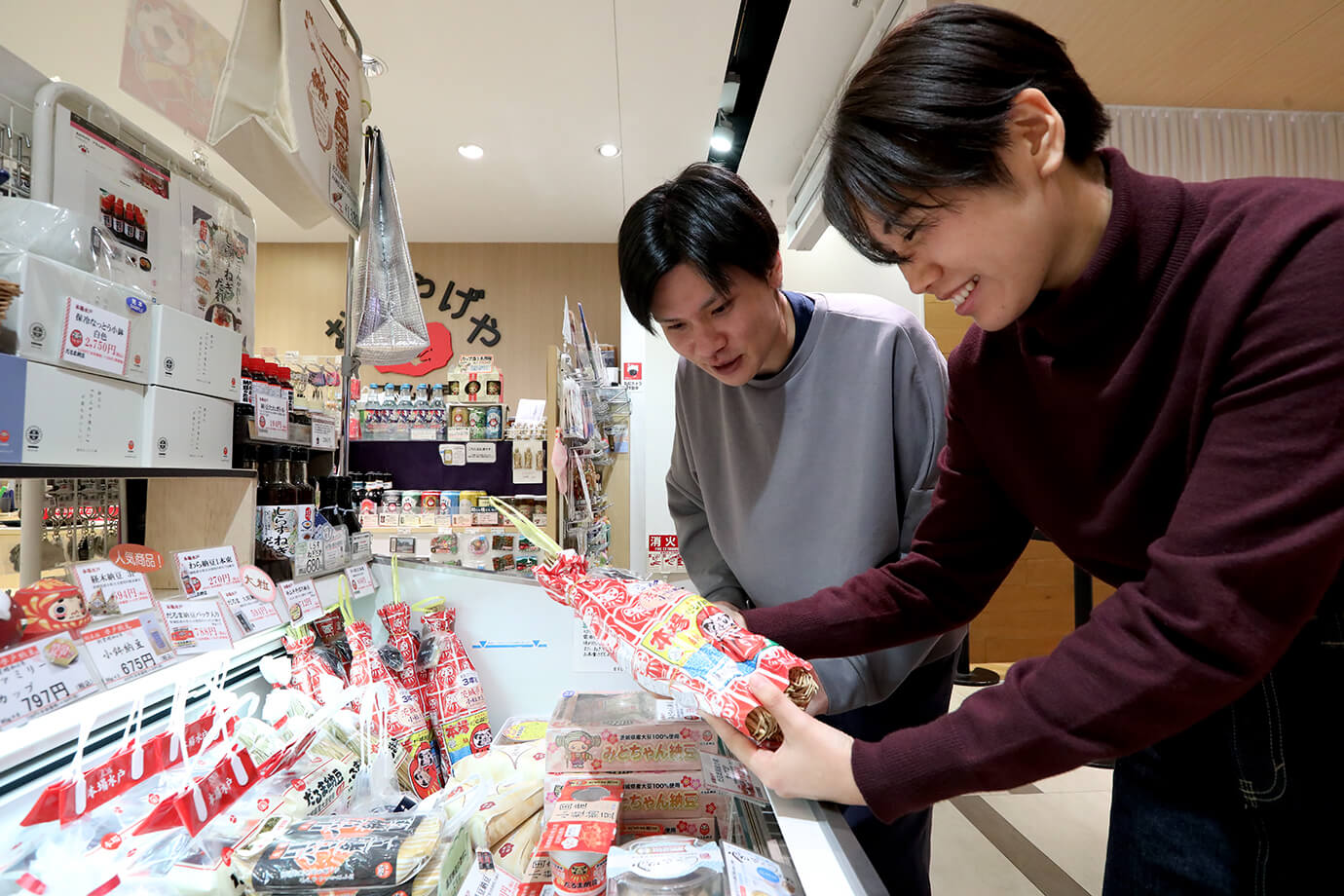
At Omiyageya Plum Mito, you will find a wide variety of souvenirs, including natto (fermented soybeans), ume liqueur, and Mito's famous confectionaries. There was a wide variety of natto (fermented soybeans), including traditional straw-wrapped natto.
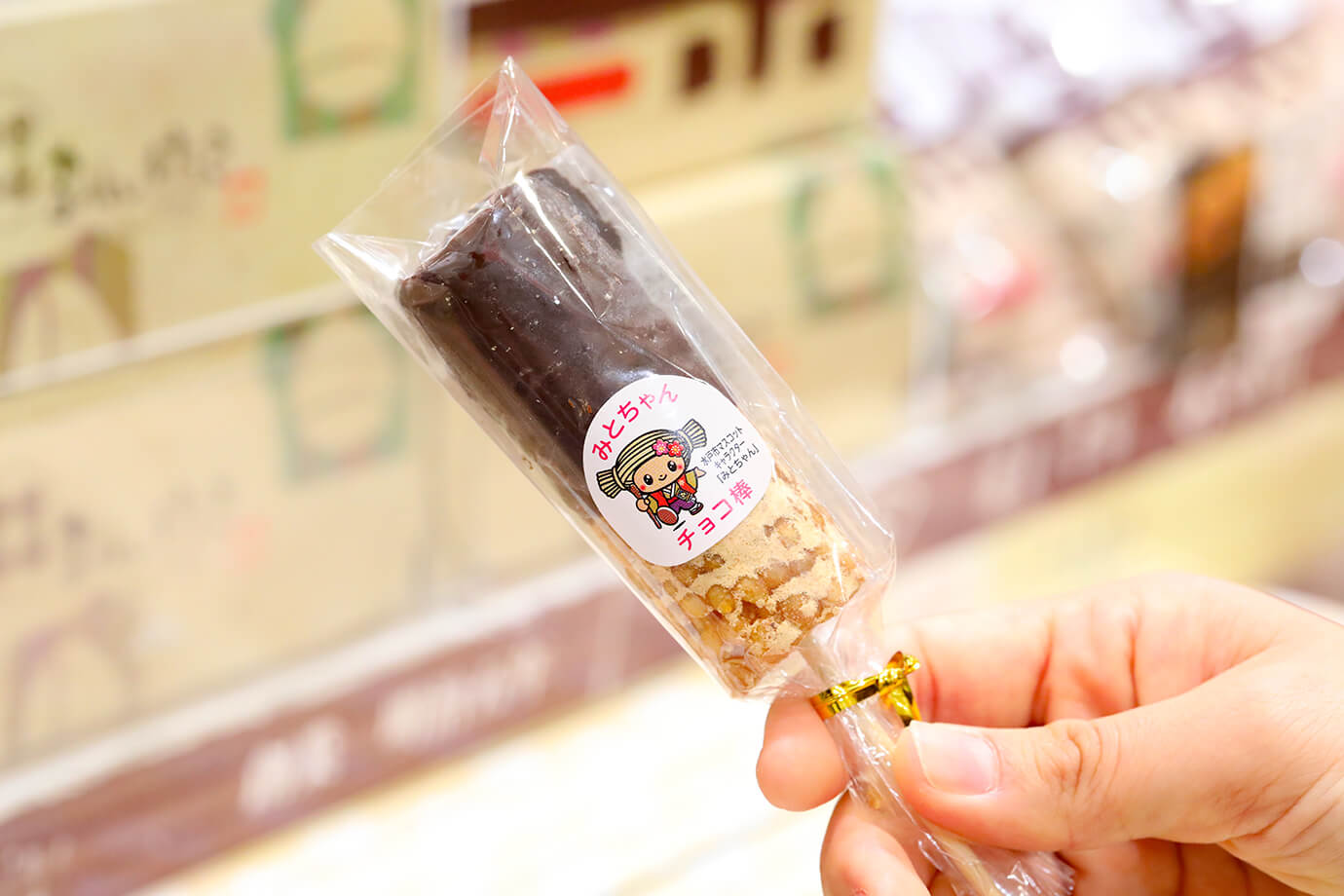
Denchu Choco-bo, a well-known Mito specialty, is covered with chocolate and costs 180 yen.

The "Mito-chan Castella Yaki" (8 pieces for 648 yen) is so cute that you won’t be able to resist buying a packet! They are even more delicious if you heat them a little in an over toaster. Just be careful not to burn them!
Excel Minami
Address:1-7-31 Miyamachi, Mito City, Ibaraki Prefecture
Telephone:029-231-7711
Hours:Varies by store
Closed:Varies by store
Ibaraki Jizake Bar Mito
Address:1-1-1 Miyamachi, Mito City, Ibaraki Prefecture
Telephone:029-297-7179
Opening hours:10:00-22:00
Closed:Open every day
Omiyageya Plum Mito
Address:1-1-1 Miyamachi, Mito City, Ibaraki Prefecture
Telephone:029-228-9363
Opening hours:10:00-21:00
Closed:Open every day

JR-East Hotel Mets
Mito
Front Clerk
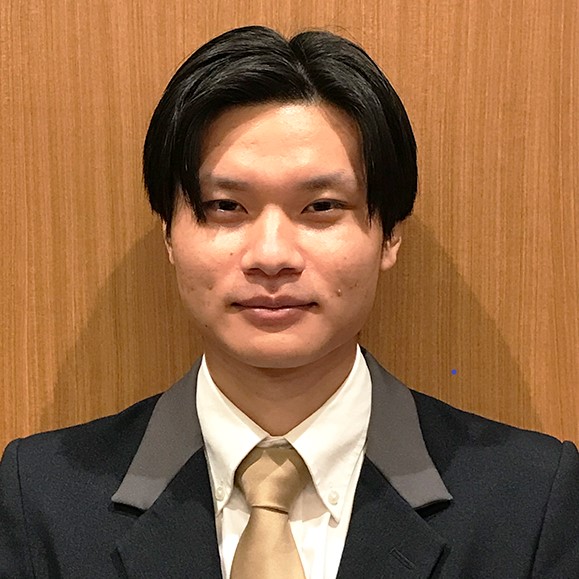
JR-East Hotel Mets
Mito
Front Clerk

JR-East Hotel Mets Mito
One minute walk from the North Exit of Mito Station. JR-East Hotel Mets Mito is ready to welcome you to a relaxing space steeped in history and heartfelt hospitality.
NotesOpenClose
*Information provided on this website is current as of December 2023. The featured facilities may change their fees, hours, days closed, menus, and other information after it has been published here, or they may be temporarily closed. Although every effort has been made to ensure the accuracy of the content on this website, including all times, fees, etc., we recommend that you contact the facility by phone or other means to get further information or make a reservation in advance. We will not be held liable for any damage in connection with the content of this website.
*All charges and fees shown on this website include consumption tax and were current at the time the information about them was collected. Facilities that offer dine-in and/or takeout services are so noted in the articles. Charges and fees are subject to change.
*Facility schedules do not reflect closures during the year-end/New Year holidays, Bon festival, and Golden Week as well as temporary closures unless specified by the respective facilities featured on this website.
*Operating hours shown on this website are generally the hours from opening to closing unless otherwise specifically noted. Last orders and entries are usually accepted 30 minutes to 1 hour before closing.
SHARE

